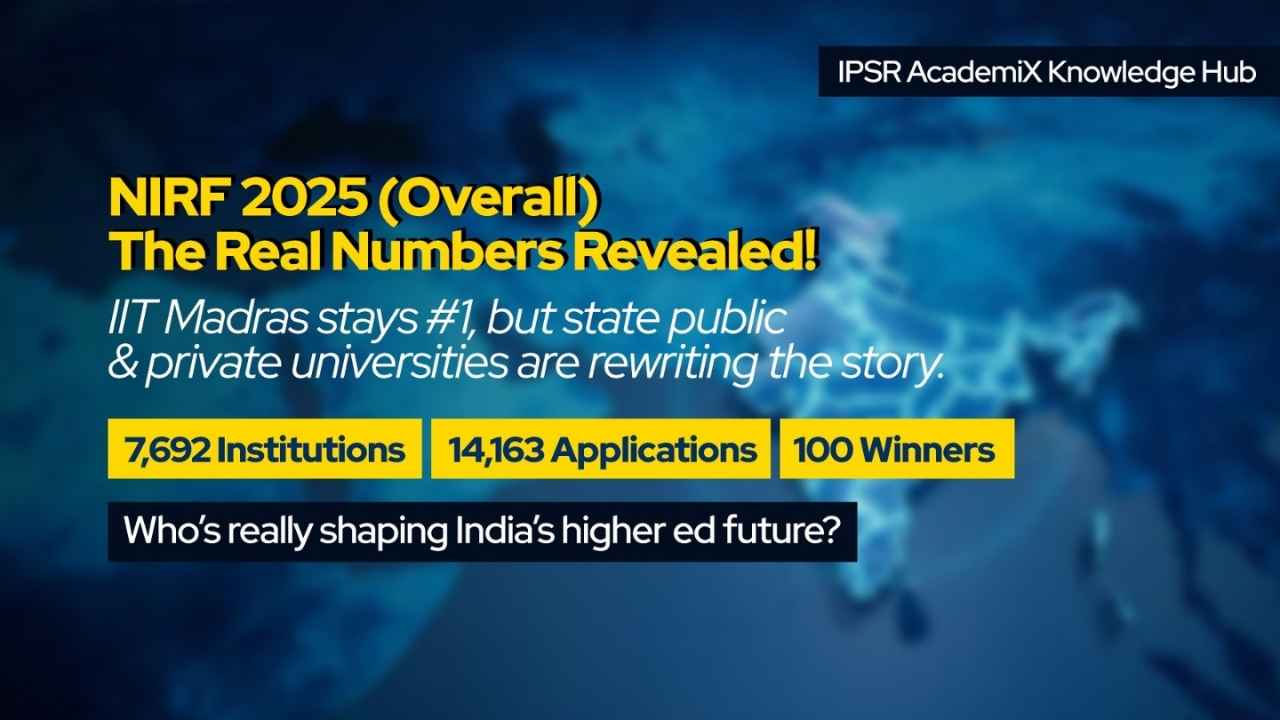
NIRF 2025 (Overall): the big picture, the real numbers, and where each state stands
Sep-10-2025,
Articles
Release date: September 4, 2025
Source: NIRF portal’s Overall Top-100 table and the official PIB press note. (NIRF, Press Information Bureau)
- IIT Madras keeps the crown at #1 Overall—again.
- Participation hit records: 7,692 unique institutions filed 14,163 applications; 4,045 in Overall alone. (2024 baselines were lower.)
- The Top-100 (Overall) isn’t just IITs: it includes state publics (24), private deemed (22), IITs + IISc (19), private universities (9), NITs (8), central universities (7), MoHFW medicals (5), IISERs (4), 1 college, and IARI.
2025 Top-10 (Overall)
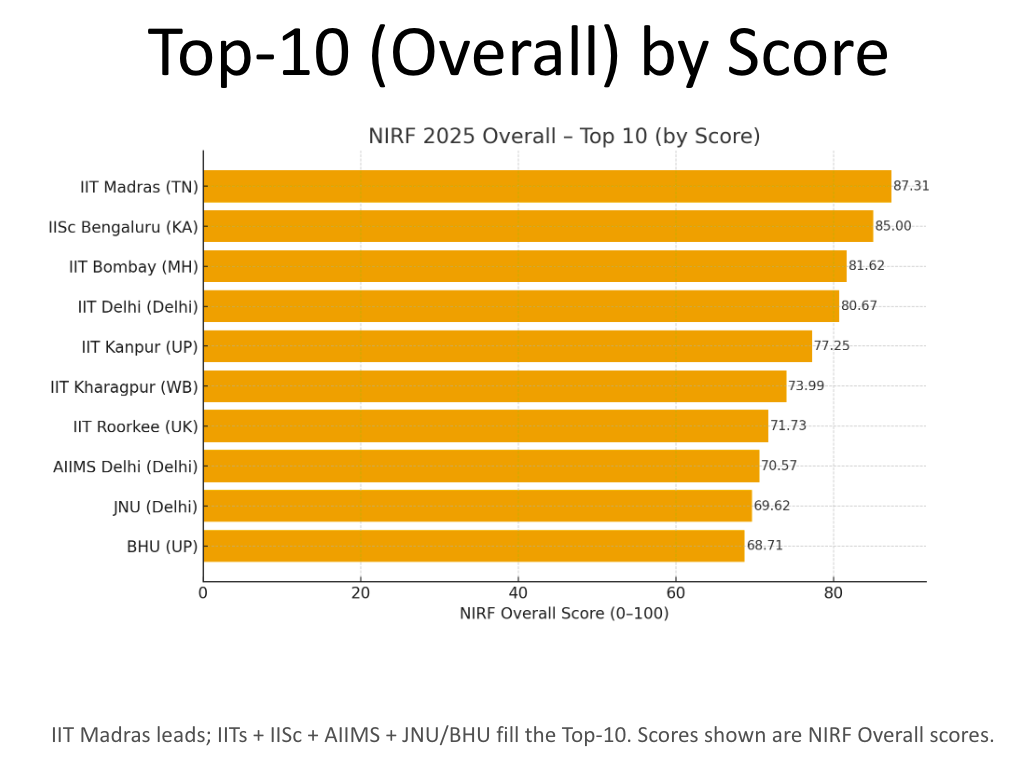
- IIT Madras (TN)
- IISc Bengaluru (KA)
- IIT Bombay (MH)
- IIT Delhi (Delhi)
- IIT Kanpur (UP)
- IIT Kharagpur (WB)
- IIT Roorkee (UK)
- AIIMS, New Delhi (Delhi)
- JNU (Delhi)
- BHU (UP).
Why you care: This set drives India’s research output, PhD pipelines, and tech-health talent. Any movement here has system-level ripple effects.
State-wise comparison (Top-25 snapshot)
To keep this precise and verifiable, here’s a count of Top-25 ranks by state. (Counted directly from the official table; each entry below maps to a visible row in ranks 1–25.)
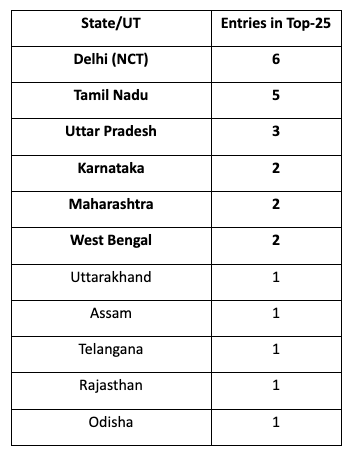
Delhi and Tamil Nadu dominate the first quartile. UP is the next major bloc in the Top-25, while Karnataka and Maharashtra hold steady with two each.
What the Top-100 is made of (by institution type)
- 24 State Public Universities
- 22 Private Deemed Universities
- 19 IITs + IISc
- 9 Private Universities
- 8 NITs
- 7 Central Universities
- 5 Medical Institutions (MoHFW)
- 4 IISERs
- 1 College + IARI (ICAR).
Take: Diversity in the Overall list is maturing. It’s not a one-track IIT show; state publics and strong private ecosystems are very much in the chat.
Participation & intensity (2024 → 2025)
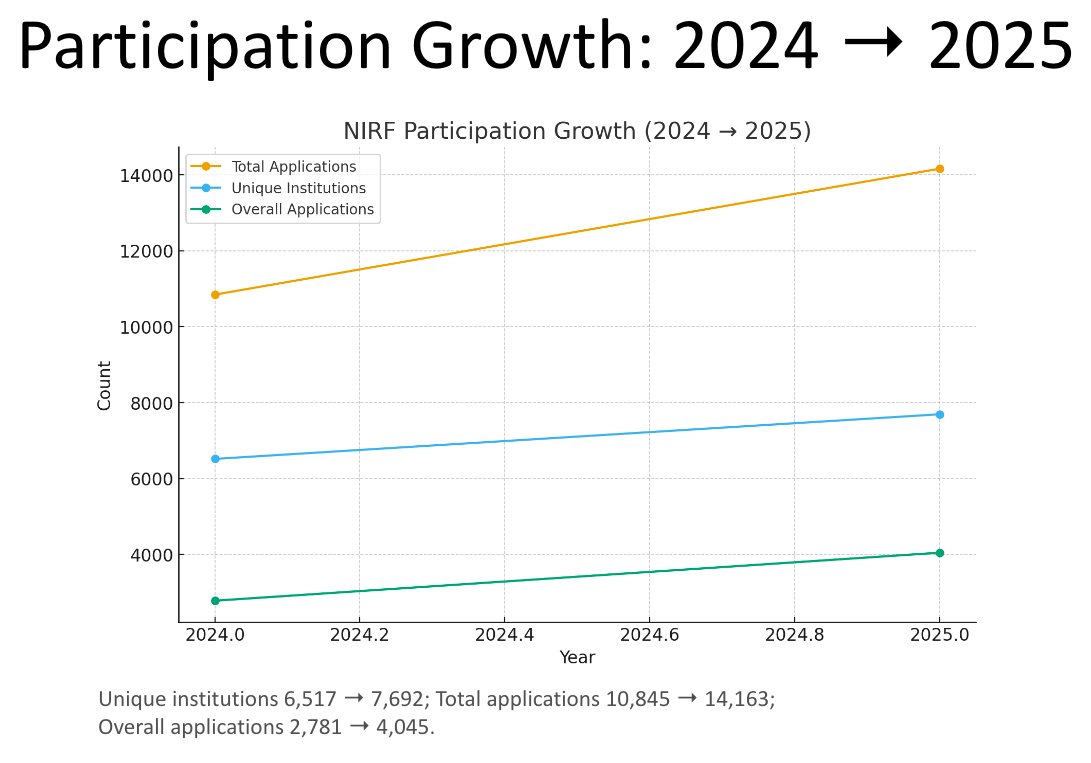
2025: 7,692 unique | 14,163 applications | 4,045 in Overall.
So what? Competition tightened meaningfully; holding rank ≠ holding performance—you likely improved to stand still.
The NIRF method (unchanged weights)
TLR 0.30 | RPC 0.30 | GO 0.20 | OI 0.10 | Perception 0.10. Stable weights = stable KPIs for your internal dashboards.
10 takeaways you can act on (Overall, 2025)
- IIT-M run = dynasty: #1 Overall for 2019–2025. That’s systems thinking—hiring, labs, PhD velocity, industry links—working in sync.
- Delhi ecosystem = stacked: IIT-D, AIIMS, JNU, DU inside the Top-25 confirms the capital’s research-hospital-policy flywheel.
- Southern depth: Tamil Nadu places five in the Top-25 and continues to spread strength across IIT, public, and private tech-medical clusters.
- UP’s breadth shows: From IIT-K and BHU to AMU and IIT (BHU), the state blends historic universities and tech pipelines.
- Type diversity ≠ tokenism: With state publics (24) and private deemeds (22) in the Top-100, multiple governance models are delivering.
- Method stability helps planning: Same weights year-on-year means your progress is legible—no moving goalposts.
- RPC still the separator: Among near-peers, Research & Professional Practice often decides who climbs; invest in citations, patents, industry grants. (Scan Top-10 scorecards to see the pattern.)
- GO matters for generalists: Graduation Outcomes keeps comprehensive universities (e.g., JNU, BHU) competitive vs. pure-play STEM flagships.
- OI/Perception is not fluff: Outreach, diversity, and reputation nudge close races; the Delhi bloc consistently benefits here. 2026 playbook: Scale PhD output & faculty, court industry-funded research, and push inclusive access/internationalisation—they’re durable levers under NIRF.
Dr. Mendus Jacob, is the CEO of ipsr solutions limited and Professor & Director of the MCA Programme at Marian College, Kuttikkanam (Autonomous), with over 35 years of experience as an academician and entrepreneur. He is the former Director of School of Applicable Mathematics, M. G. University, Kerala. A Ph.D. in Operations Research with numerous publications, he has served on academic bodies of universities and autonomous institutions, produced Ph.D.s, and been a sought-after resource person for global conferences and faculty development programmes. An expert in NEP, Outcome Based Education, and Accreditation, he has mentored prestigious universities and trained over 40,000 faculty members nationwide on OBE implementation.




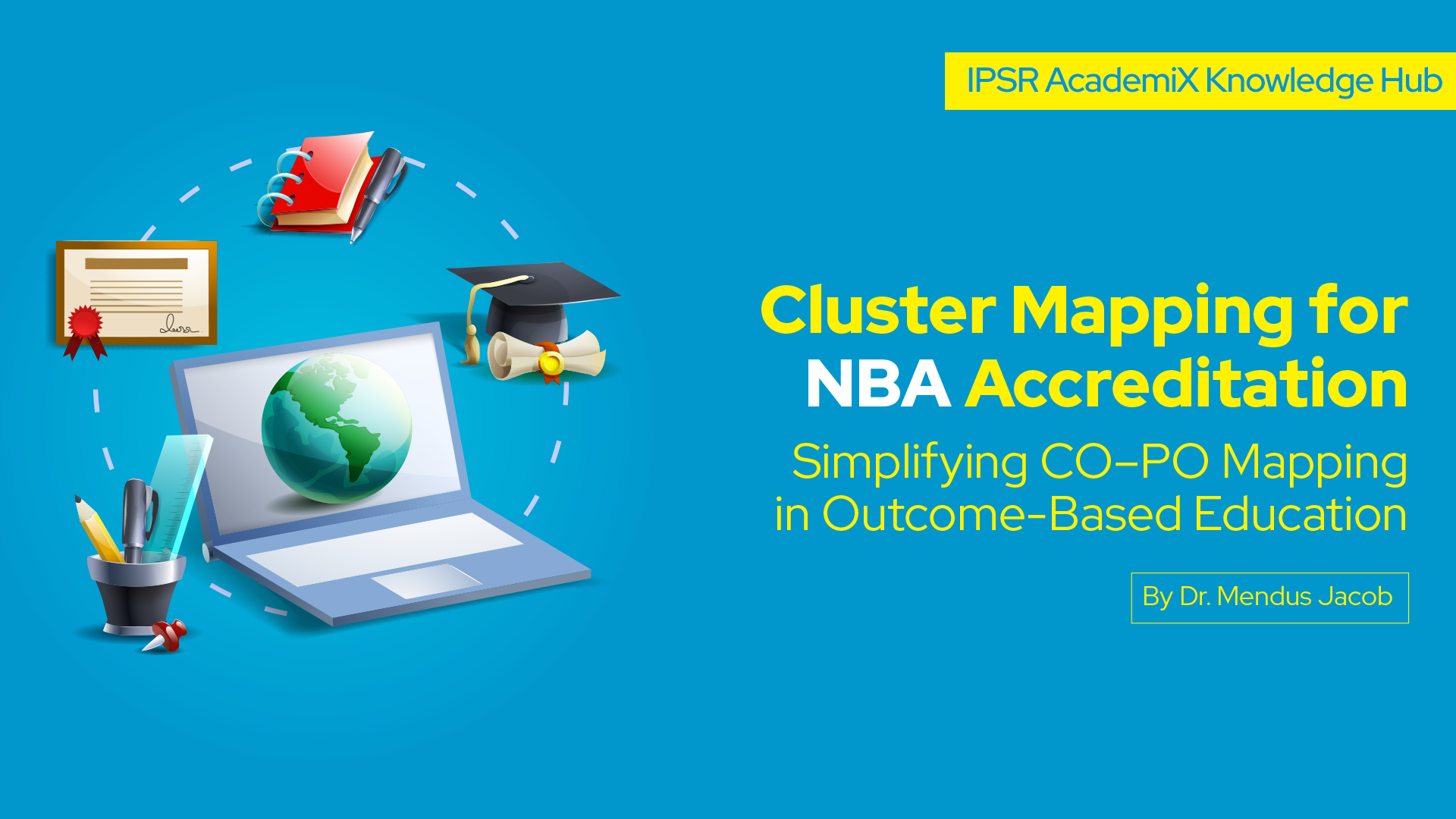
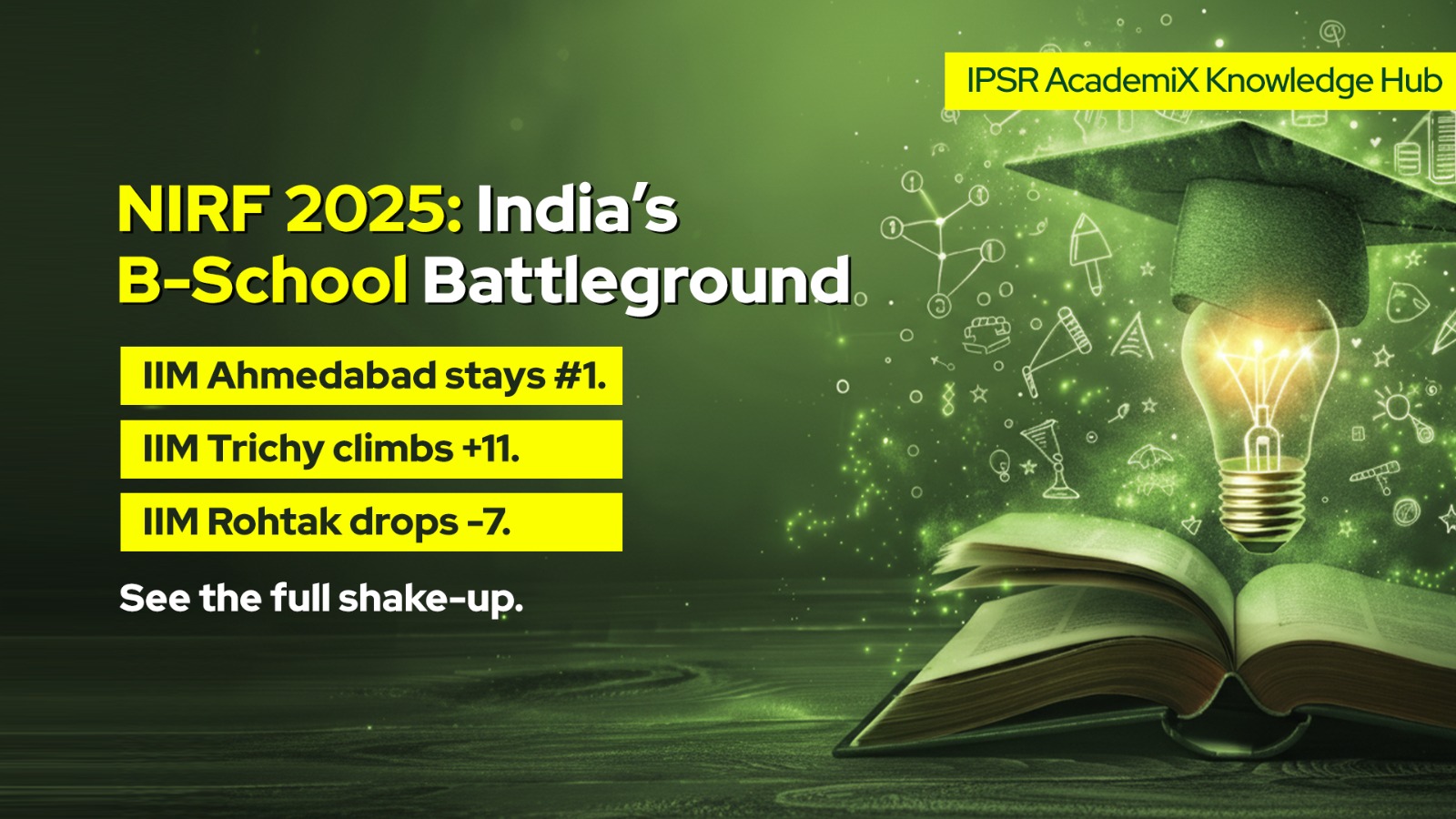
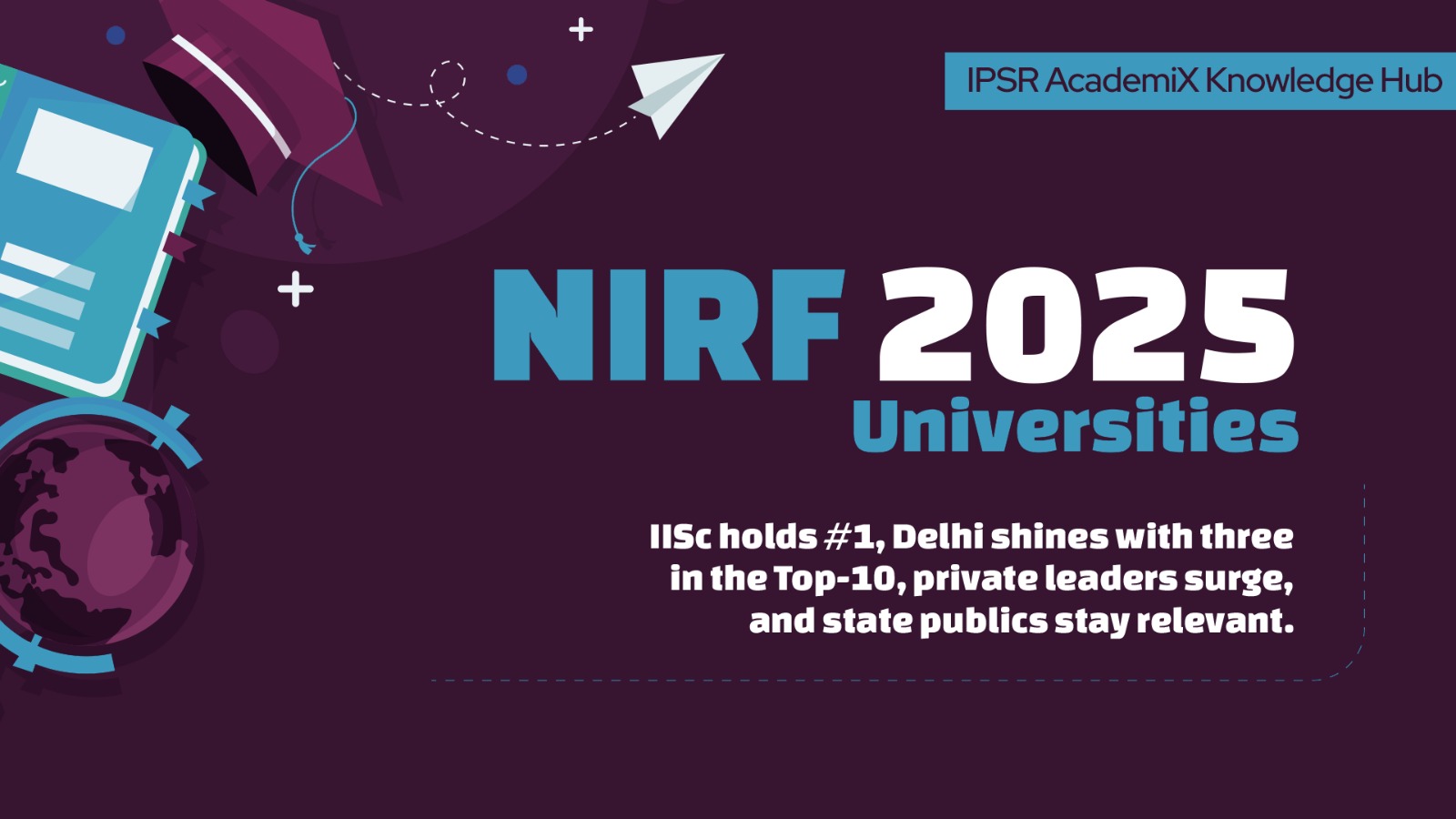
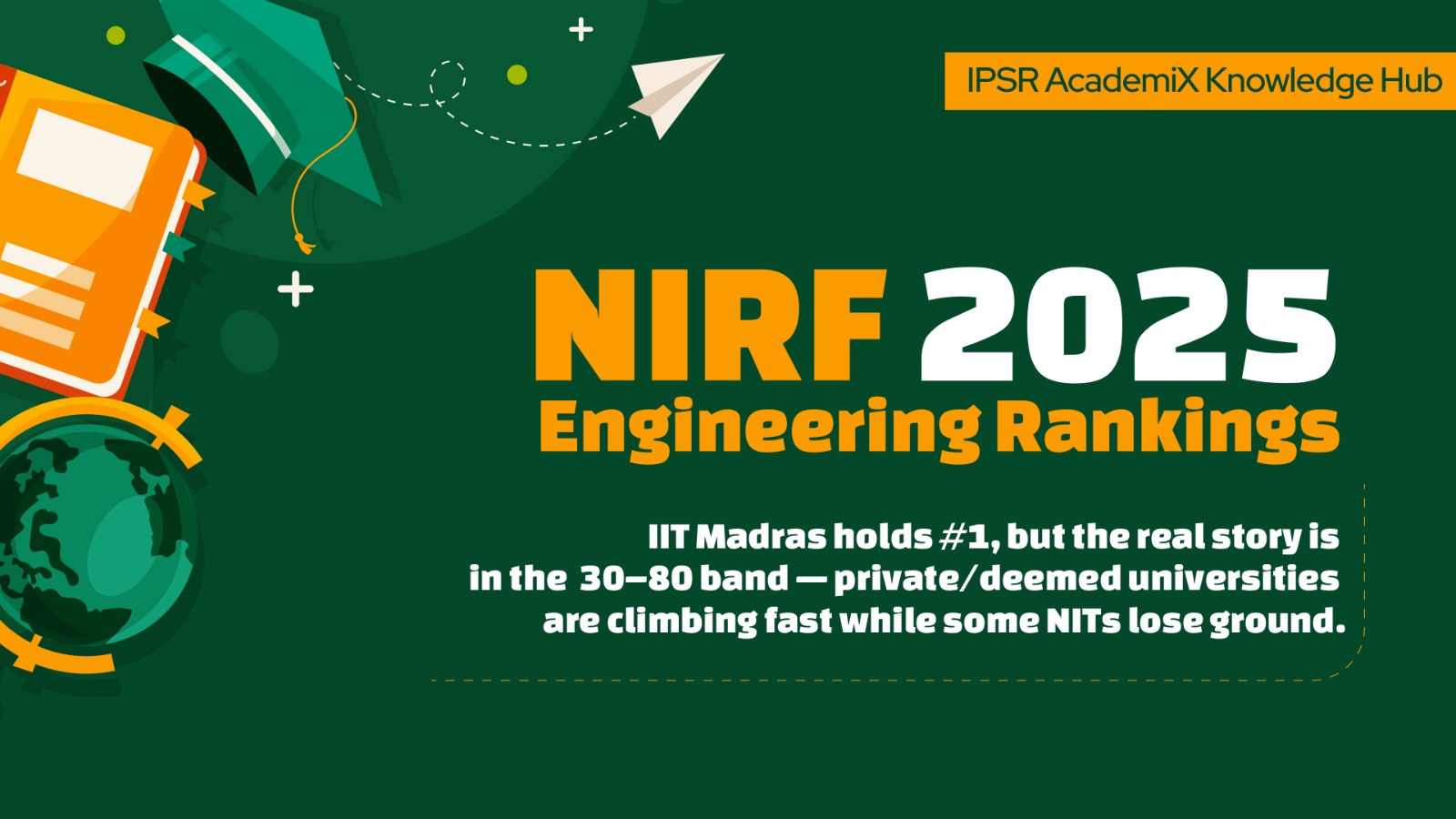
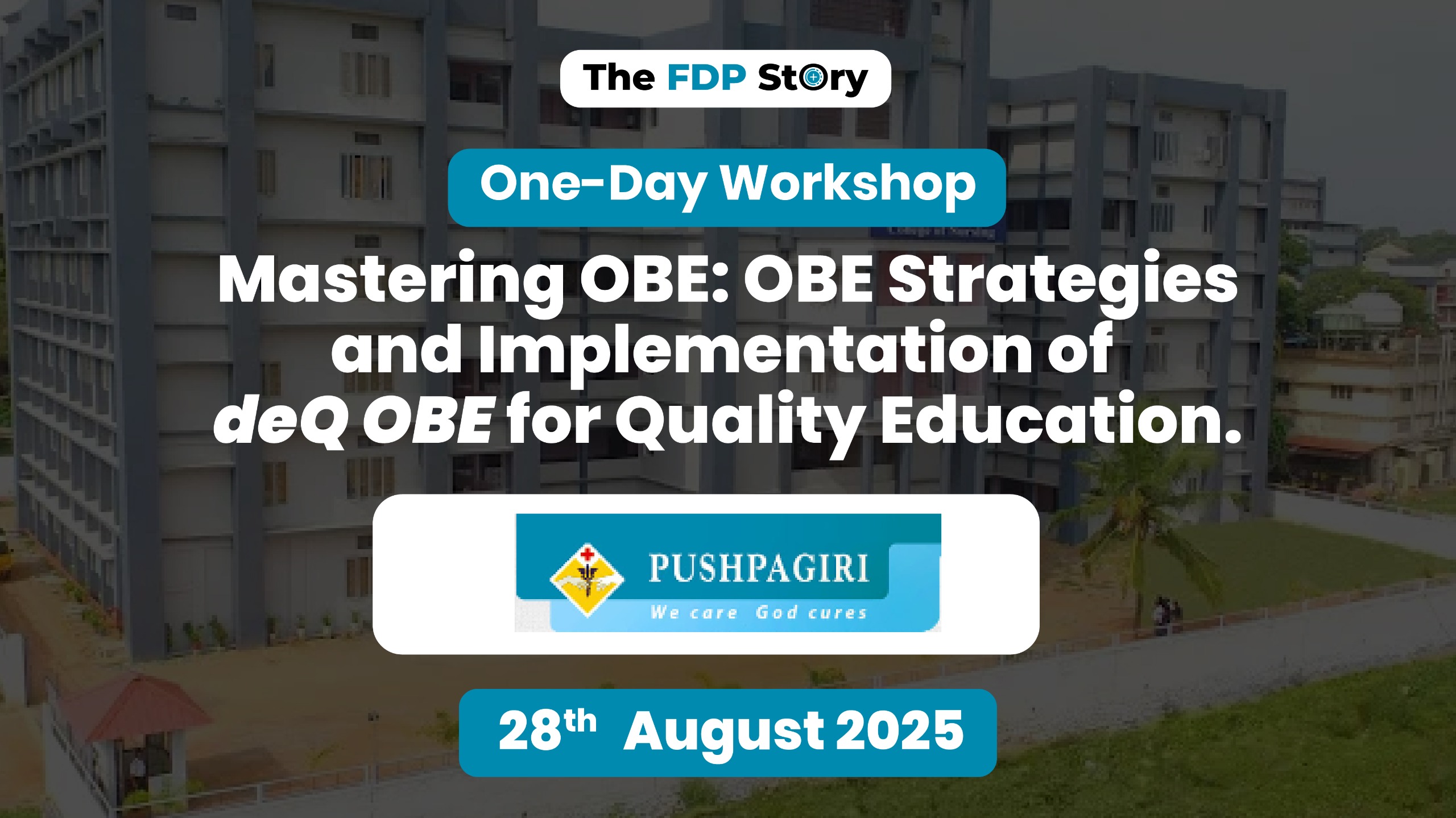
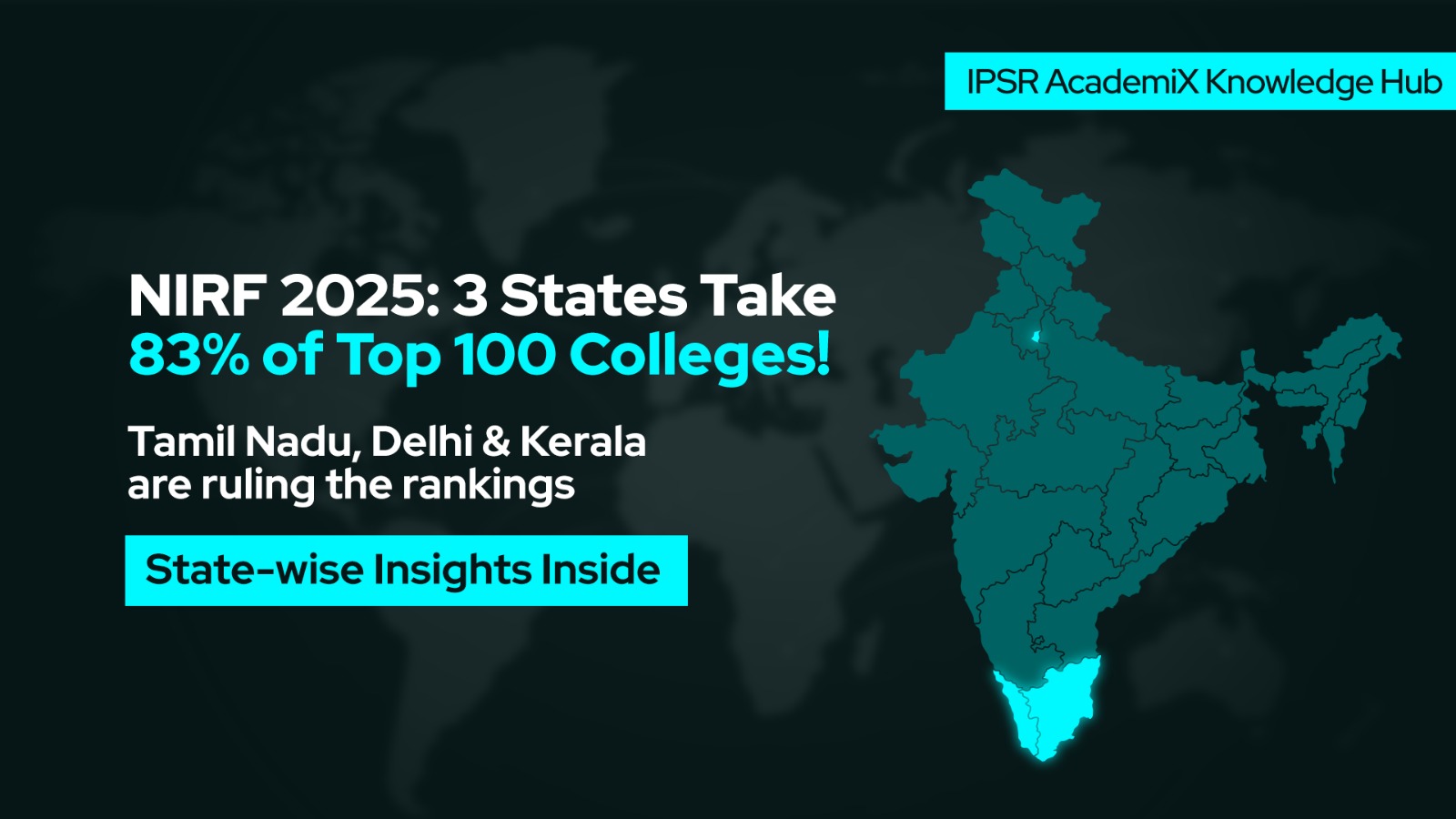
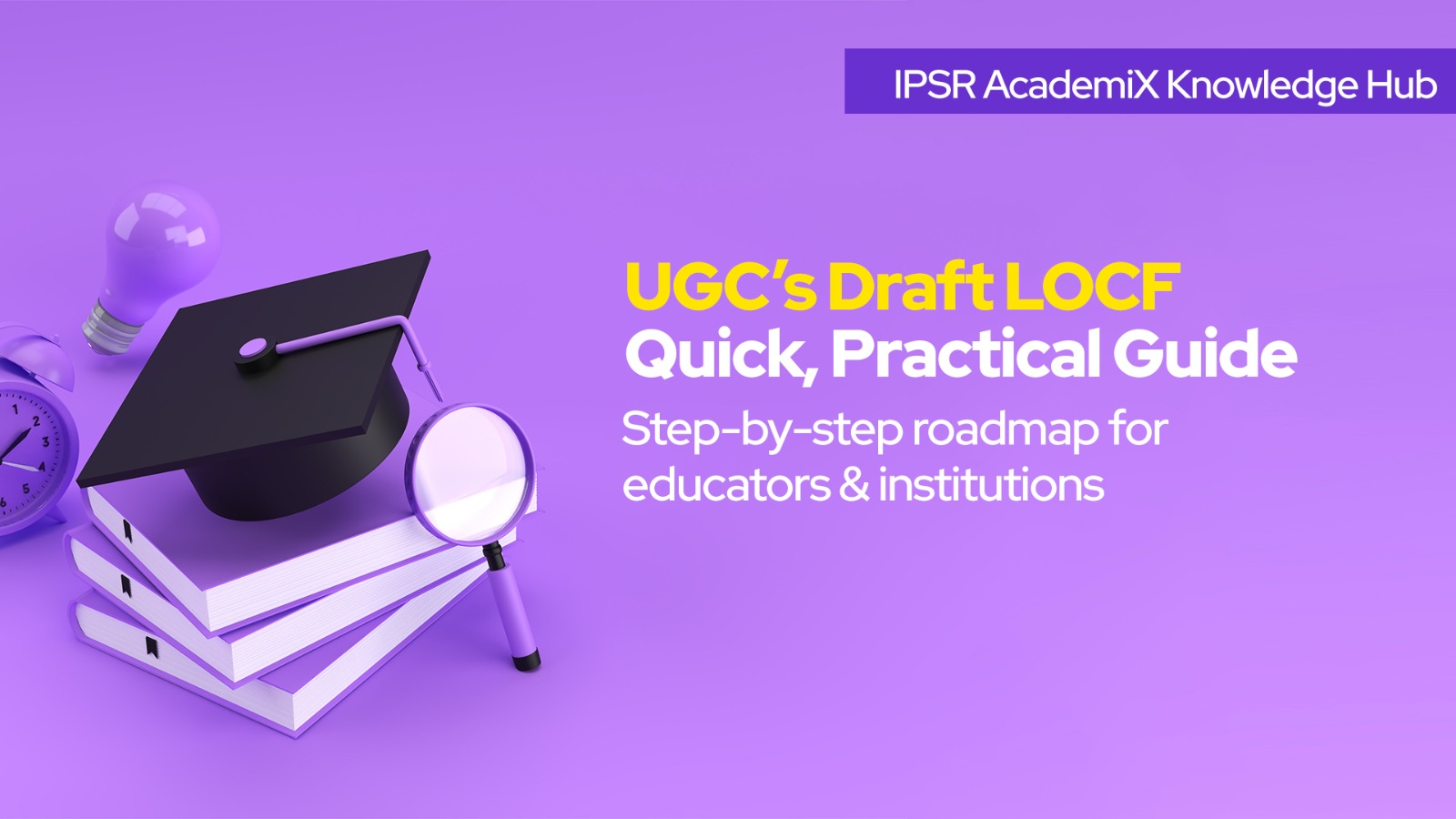


Leave A Comment